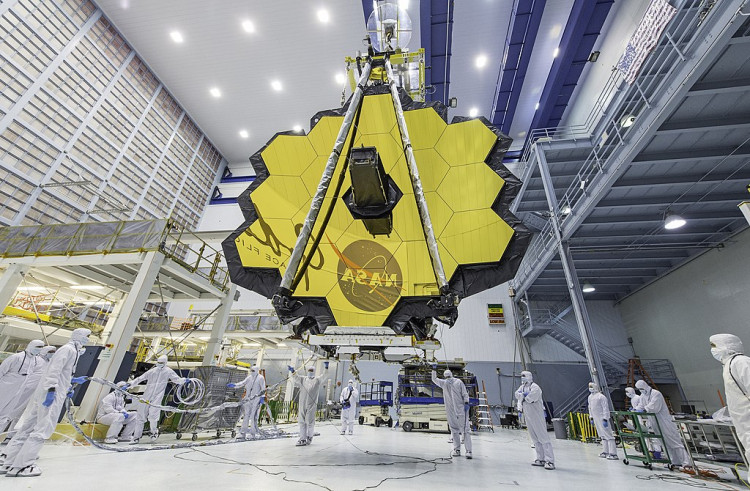In a vital test of its infrared observing capabilities, NASA's new deep-space observatory will soon switch between hot and cold modes.
The James Webb Space Telescope is preparing for a thermal stability test after completing its alignment phase with sharp images of distant stars last week. This daring challenge will purposefully rotate the observatory between locations where it receives more or less sunlight.
The goal is to ensure that the $10 billion observatories can continue their scientific work despite the extremes of space, without sacrificing image quality, pointing ability, or other critical abilities that will keep them focused on the early universe.
The deep-space observatory must remain ultra-cool to conduct infrared observations of the early universe and avoid solar radiation fluctuations, but Smith said the observatory still undergoes some changes as the sun's angle shifts upon the sunshade.
To fully comprehend how the shifting thermal environment affects the mid-infrared background levels, the mid-infrared instrument will be deployed in both hot and cold attitudes.
Webb will begin the test with a "hot attitude," which represents a pitch of 0 degrees. (Pitch is the angle between -5 and +45 degrees away from the sun.) It will remain there for five days to stabilize, enabling teams to take measurements from Earth.
The team will then switch Webb to a colder attitude, approximately +40 degrees pitch. According to Smith, the observatory's near-infrared camera (NIRCam) will be evaluated for 24 hours to see if there are any impacts on the optics, and then the telescope's consistency will be monitored for 12 hours to see how it behaves with the thermal change.
"The thermal stability exercise will measure these changes by moving between the extremes of Webb's field of view, from the hot to the cold attitude, spending multiple days in the cold attitude, and then slewing back to the hot attitude," Erin Smith, Webb deputy observatory project scientist, said in an agency statement released Saturday (April 29).
The telescope will remain in this freezer mode for around a week to allow temperatures to stabilize further before slewing back to a hot attitude. Webb will collect stability data for the second round of the heat using both NIRCam and its fine guidance sensor.
All in all, the changes should be minor, but Webb's exceptional sensitivity to its surroundings will make this thermal screening critical in preparation for its observational period, which is set to begin in June.




